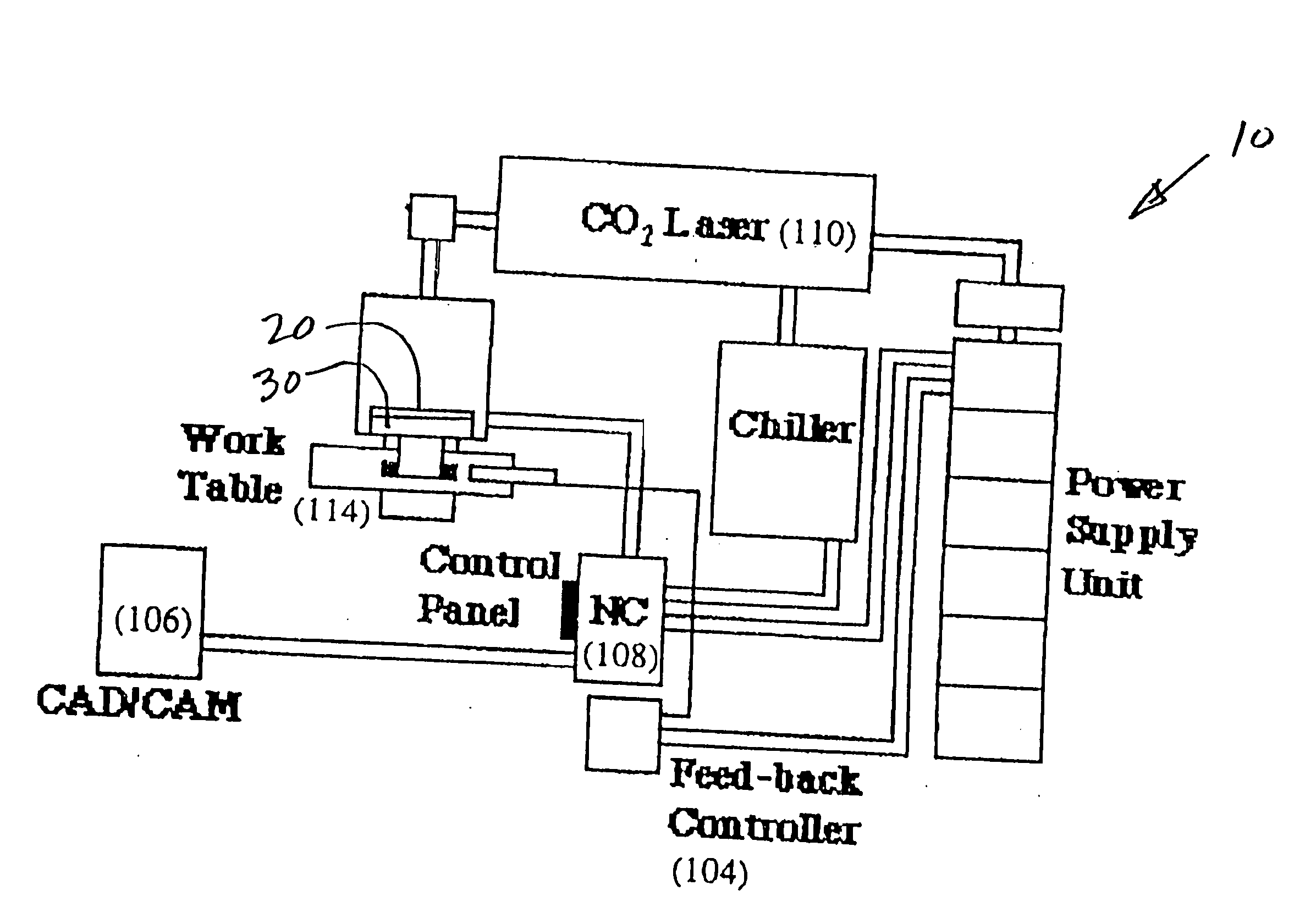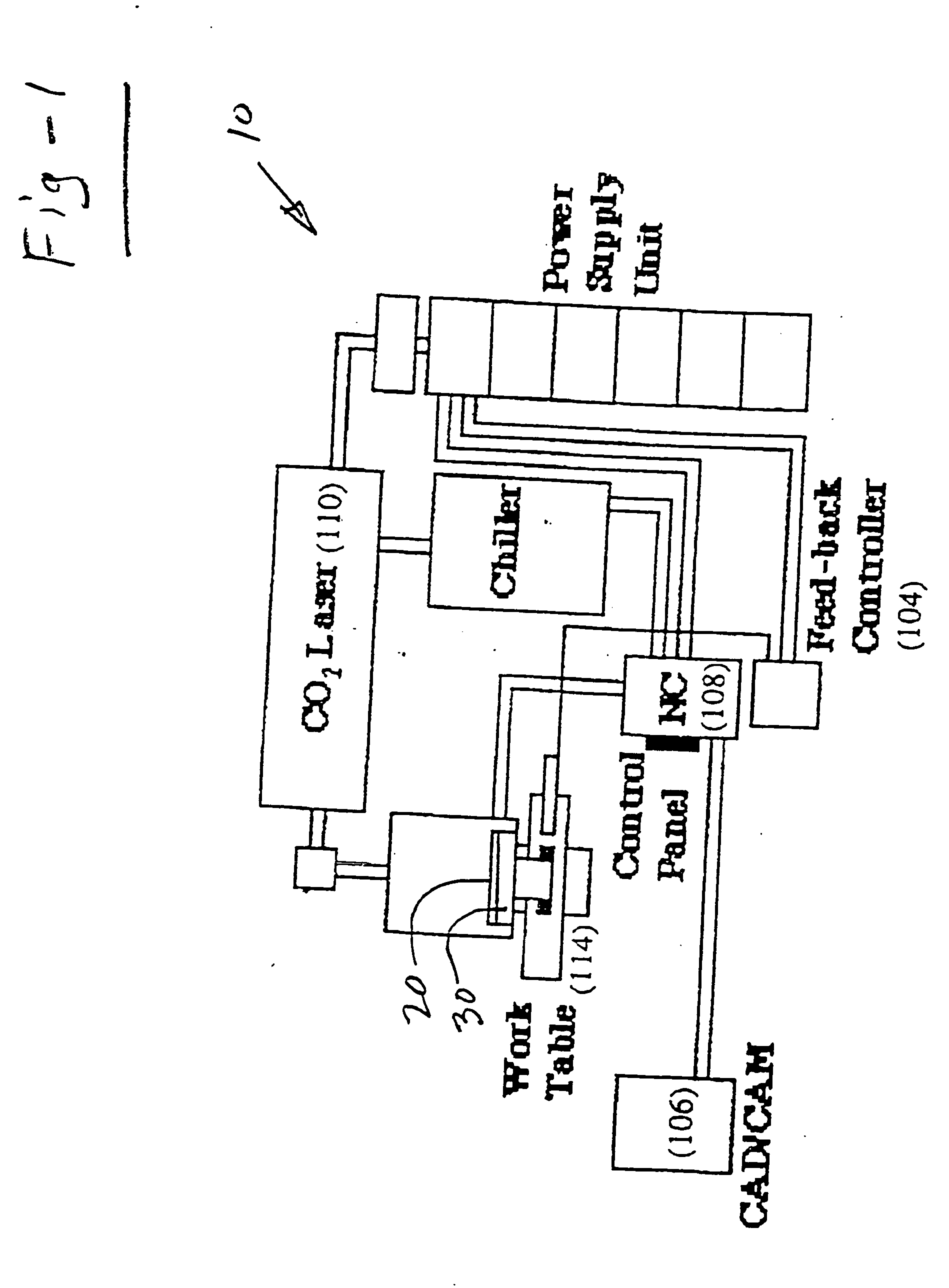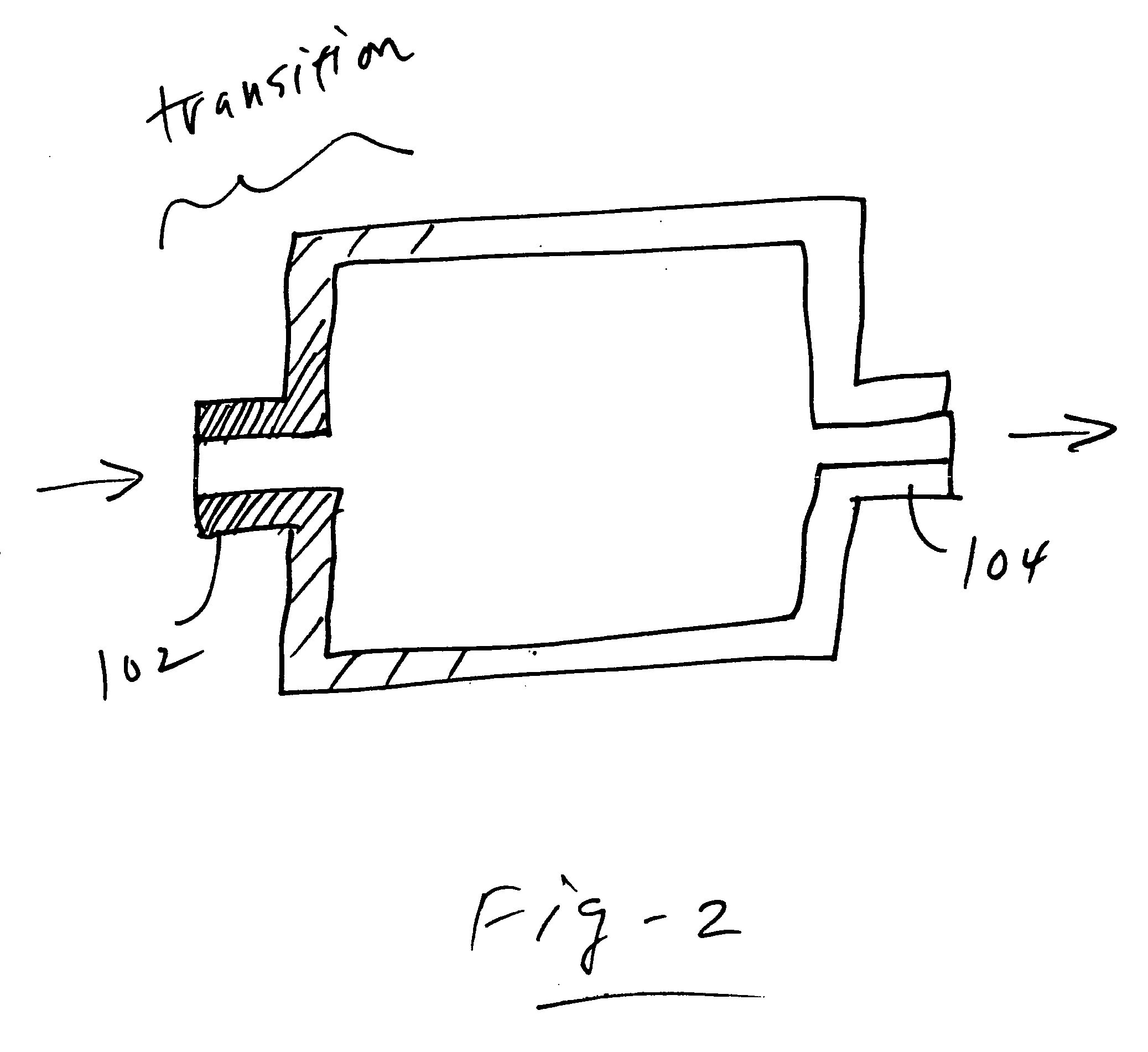Fabrication of alloy variant structures using direct metal deposition
- Summary
- Abstract
- Description
- Claims
- Application Information
AI Technical Summary
Benefits of technology
Problems solved by technology
Method used
Image
Examples
Embodiment Construction
[0019]FIG. 1 illustrates a laser-aided, computer controlled direct material deposition (DMD) system in schematic form. The system 10 applies layers of material 20 on a substrate 30 to fabricate an object or cladding. As discussed above, the system is preferably equipped with feedback monitoring to control of the dimensions and overall geometry of the fabricated article. The geometry of the article is provided by a computer-aided design (CAD) system.
[0020] The deposition tool path is generated by a computer-aided manufacturing (CAM) system for CNC machining with post-processing software for deposition, instead of software for removal as in conventional CNC machining. CAM software interfaces with a feedback controller 104. These details of the laser-aided, computer controlled direct material deposition system are disclosed in U.S. Pat. No. 6,122,564, and are therefore not all explicitly shown in FIG. 1.
[0021] The factors that affect the dimensions of material deposition include lase...
PUM
| Property | Measurement | Unit |
|---|---|---|
| Thickness | aaaaa | aaaaa |
| Wear resistance | aaaaa | aaaaa |
| Structure | aaaaa | aaaaa |
Abstract
Description
Claims
Application Information
 Login to View More
Login to View More - R&D
- Intellectual Property
- Life Sciences
- Materials
- Tech Scout
- Unparalleled Data Quality
- Higher Quality Content
- 60% Fewer Hallucinations
Browse by: Latest US Patents, China's latest patents, Technical Efficacy Thesaurus, Application Domain, Technology Topic, Popular Technical Reports.
© 2025 PatSnap. All rights reserved.Legal|Privacy policy|Modern Slavery Act Transparency Statement|Sitemap|About US| Contact US: help@patsnap.com



